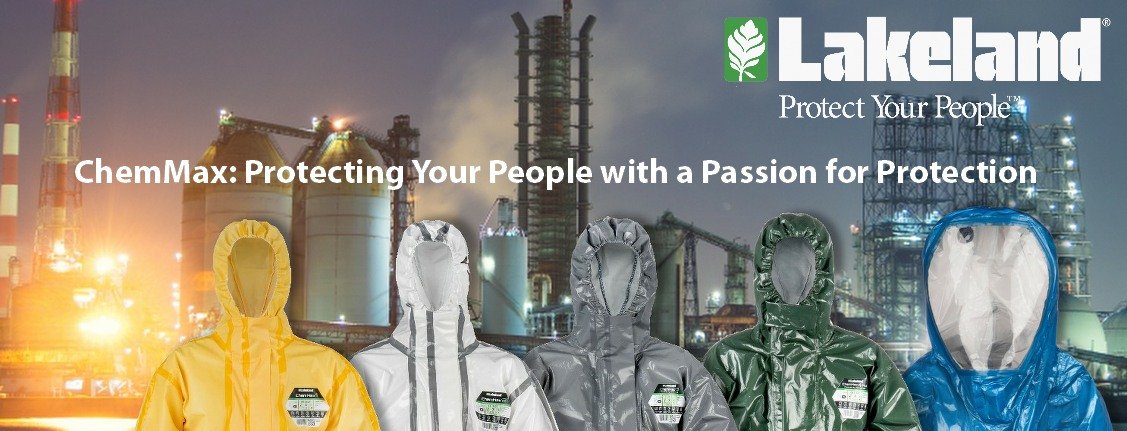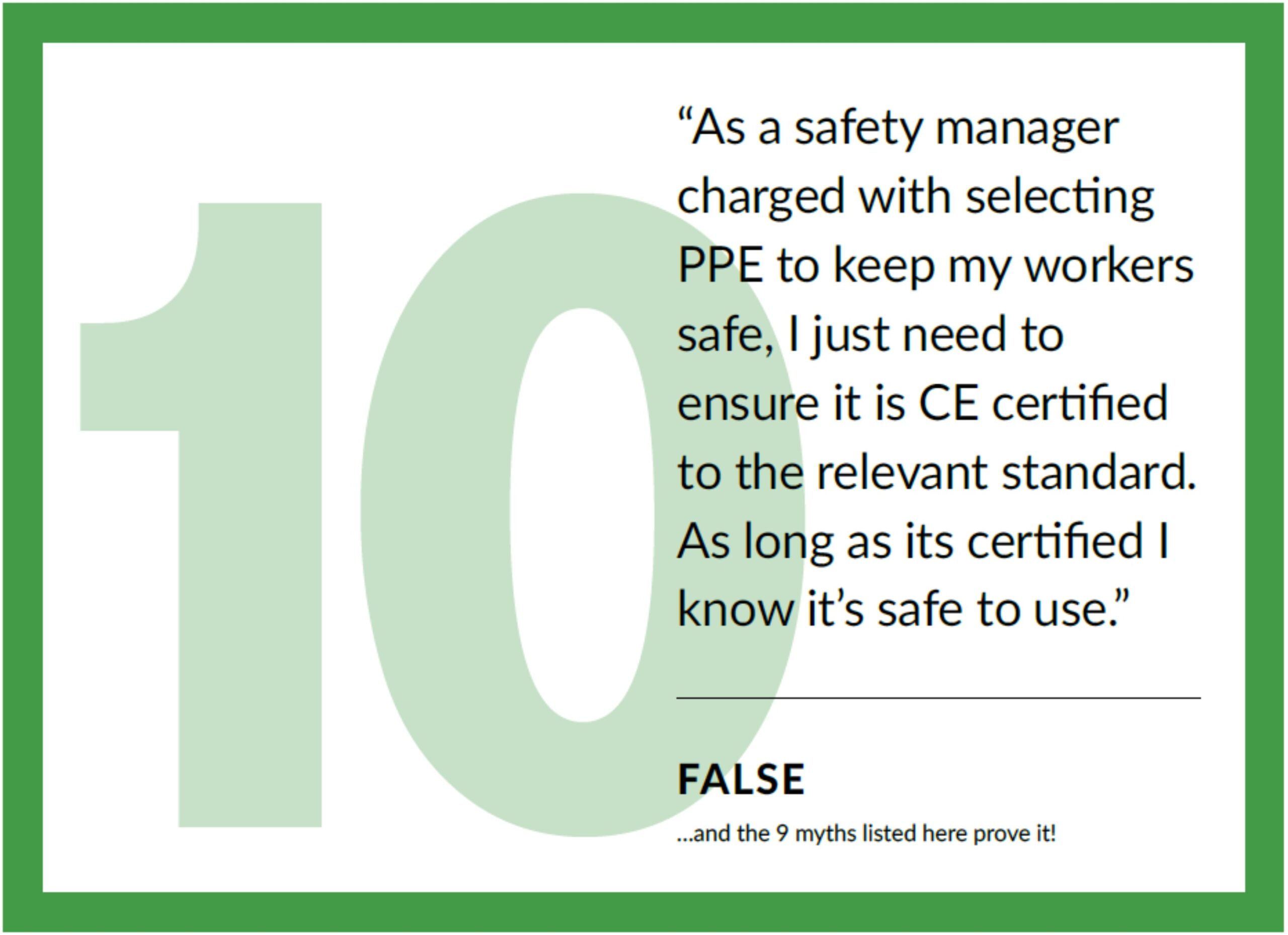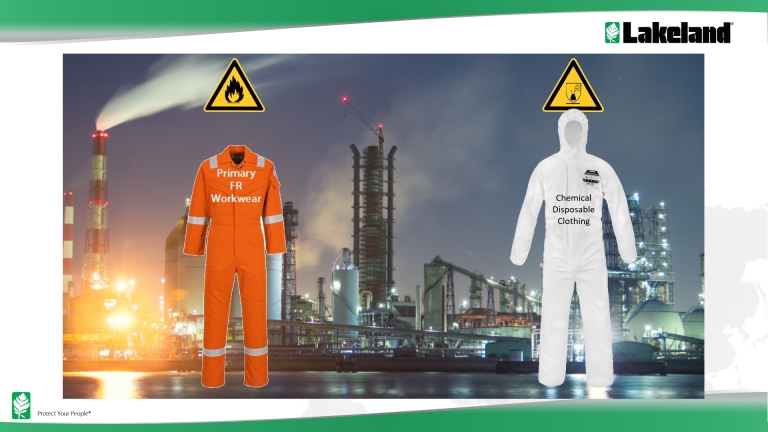In a recent webinar I shared insights on global safety standards, gathered from 30 years of experience in the protective clothing industry. Looking at how to use that knowledge to get the best from your PPE, the webinar incorporates a plea for a new approach to PPE standards. An approach that could improve protection and save lives.
This blog summarizes the presentation and provides links to other resources and further reading on the subject.

The webinar was broken up into four parts:
- An introduction looking at the current global PPE standards landscape and the purpose that standards serve
- The example of standards for chemical protective clothing
- The example of standards for FR workwear
- Outlining a new approach to how we view standards and how they can be useful in getting the best protection for workers.
You can watch the webinar, or read the summary and highlights below. If you have any follow up questions or would like me to elaborate on any points mentioned, please reach out to me on LinkedIn!
Webinar Summary
Introduction: Why is the Same Chemical Threat Met With Different Standards of Protection Across the Globe
As we embark on the third decade of the 21st century we have a situation where different standards are applied in different regions for the same types of protection. The USA and Europe have their own standards. Other regions either have their own versions or pick and choose according to product or convention, whilst some apply no standards at all. Its all a little chaotic.
Does having different standards in North America and Europe mean the protection is different? Is the hydrochloric acid you need splash protection against in Delaware different from the hydrochloric acid in Sydney, Australia? No. It’s the same hydrochloric acid. Or is the heat protection you need from a blast furnace different in Mexico than in Beijing? Of course not. It’s the same radiant heat energy. It’s not logical that we have different standards around the world for the same protection.
And there are consequences. Different standards can result in different products, which means although the hazard is the same, the protection provided may be different. However there may be a way to take advantage of this, and this is the focus of the webinar.

Let’s start by asking three questions relating to PPE.
1. What is PPE for?
PPE (Personal Protective Equipment) protects against hazards that may cause serious consequences, such as death or irreversible damage to the wearer’s health.
2. What are PPE standards for?
Standards ensure PPE meets minimum performance requirements. Essentially, they make sure that it will do the job of protection that it should. If you use PPE that is not certified to any standard, you have no idea whether it will work or not.
3. What are safety managers for?
Among the many things that safety managers do, one of them is to select PPE to protect workers from those workplace hazards in specific applications.
Considering the answers to these three questions, it is clear that PPE standards play a vital role in the process of PPE selection, especially in ensuring that PPE used will do the job of protection required.
Yet standards do more than this. They also provide safety managers with methods of analysis, allowing comparison of different products and assessment for specific and unique applications.
In this sense, standards are a very important tool for sales managers in enabling better selection of the best PPE for their task. If you look at standards in this way it is clear that only using one region’s standard in this selection process, simply because of where you happen to be, is limiting. Better selection might be achieved by also looking at what other standards have to say about your product and its performance, even if they may not be standards normally used in your region. This is the main contention of this webinar.
Examples of using global standards to get the best from your PPE
Chemical Protective Clothing

Whilst European EN standards include specific detailed assessment of different types of clothing for different forms of chemical hazards, there are in fact no real standards in the USA for chemical protective clothing. Rather, OSHA, the U.S. Occupational Safety & Health Administration, has established four general protection levels relating to chemical protection. However, unlike the EN standards, rather than dealing with only chemical suits, these address the totality of PPE required with a priority given to respiratory protection, but with no detail or assessment of individual PPE properties. The OSHA protection levels comprise guidance on total protection required rather than definitive standards on individual PPE.
| You can read in more detail about the differences between US and EU standards for chemical protective clothing in our blog here. |
The two are therefor complimentary, and a safety manager can make use of both EN standards and US OSHA protection levels guidance. OSHA as guidance for the totality of PPE required and EN standards for detailed assessment of individual items of PPE.
Flame and Heat Protective Clothing

This example is even more indicative of the principal of making use of more than one standard type: –
- There is no standard in the US equivalent to the European EN 11611 – a variation targeted at garments intended for welding applications, and containing specific performance and design requirements. Evidently, this might be useful knowledge for safety managers with a requirement for this type of protection in North America
- EN 11612 and NFPA 2112 are the equivalent standards for this type of protective clothing.
- These two main standards contain similar testing and assessment. However: –
- The NFPA standard contains only one heat energy transfer resistance test against convective heat. By contrast, the EN standard offers five tests against different types of heat energy transfer (convective, radiant and contact heat and molten iron and aluminum splash). Clearly the optional tests in the EN standard could be useful additional information for safety managers in North America in relation to specific applications.
- Both standards include a highly useful thermal mannequin test on the finished garment. But whilst mandatory and according to set parameters in the US, it is entirely optional in Europe and without set parameters, making comparison difficult. So, clearly, users in Europe would do well to learn from the US standard and require thermal mannequin testing according to set parameters.

Global PPE Standards: A New Approach
How a new approach to PPE standards can save lives.
During my thirty years in PPE I long ago came to the conclusion that too many people in the business see standards as a box to check off. Simply a legal or local market-led requirement that just must be met. The result is that interest in standards is too often limited only to whether a product is certified to it, rather than being an interest in the detail of the certification and testing, and what information it provides to assist in better PPE selection.
This webinar is a call to change that. A call for those in the industry, whether manufacturers, distributors or users, to see standards as useful – in fact, as vital – tools in their kit. Tools that can play a key role in selection of PPE, and that will help ensure that the PPE selected is the best it can be for the job. If viewed in this way, then it is patently obvious that limiting your tool selection to only those that happen to apply in your region simply by dint of where you live, is limiting. All standards have benefits and short-comings, and other standards that apply in other parts of the world might include tools that you are missing out on. Tools that could help you do a much better job and that enable you to bring about even better protection for your workers.
Because at the end of the day, better PPE selection tools means better PPE selection, and better PPE selection means better protection.
And better protection saves lives.
Below, you can also watch a key clip from this webinar, in which I explain why, whether to US, EN or any other standards, you should only use certified PPE: –



